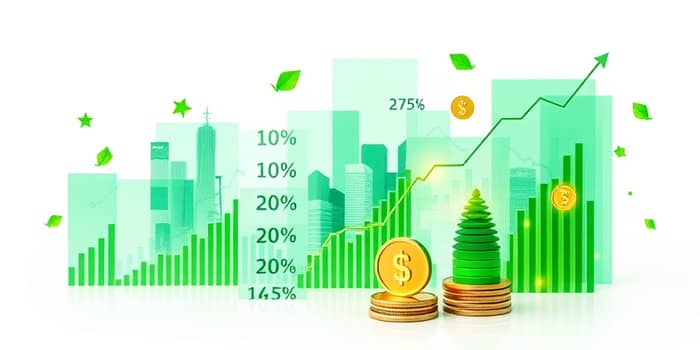
Green ETFs have surged in popularity as investors seek sustainable strategies, but understanding true diversification requires more than just surface-level analysis. Measuring both overlap and unique holdings can empower investors to craft resilient portfolios.
Portfolio overlap occurs when two or more funds share the same underlying securities. This phenomenon is common across thematic or sector-based ETFs, where a focused investment universe leads multiple funds to hold the same core names. In the green ETF space, heavy weights in leading clean energy companies mean that overlap can quickly rise to significant levels.
While some degree of overlap is natural within a single strategy or theme, excessive cross-holdings can reduce the benefits of diversification and amplify vulnerability to sector-specific downturns. When investors believe they are spreading risk across multiple funds, they may overlook concentrated exposure to a handful of stocks or industries.
In environmentally focused ETFs, popular names like Tesla or NextEra Energy often dominate multiple fund portfolios. When these funds overlap heavily, an adverse event affecting a single stock or policy change in clean energy regulations can trigger sharp, correlated declines across supposedly distinct holdings.
True diversification and increase susceptibility to systematic risks can undermine both impact goals and financial returns. By carefully analyzing overlap, investors can identify unintended concentrations and adjust their allocations to maintain balanced exposures to renewables, clean technology, sustainable utilities, and other green themes.
Overlap analysis combines quantitative metrics and visual tools to reveal shared exposure between funds. The most straightforward measure is the percentage of common holdings, which represents the weight of overlapping assets relative to the total portfolio.
Advanced techniques such as network or graph analysis map interconnections and clusters across multiple ETFs, highlighting systemic concentrations of risk. Regulators and research firms increasingly use these maps to identify funds with shared vulnerabilities, especially in low-carbon or ESG-labeled categories.
Industry overlap should also be measured. Two ETFs may show limited stock overlap but still concentrate heavily in a single sector, such as solar or wind energy, leading to similar performance patterns in certain market conditions.
Investors can leverage both manual and automated approaches to assess overlap and unique holdings:
While automated platforms streamline the process, manual checks remain valuable for verifying data accuracy and exploring qualitative insights into each fund’s strategy.
Green ETFs often target a narrow universe of industry leaders in renewable energy, sustainable materials, and clean technology. This focus can limit true diversity unless funds include smaller or emerging names. Unique holdings can differentiate the fund by offering access to high-growth potential companies that fall outside mainstream indices.
Carbon intensity metrics also play a role. Funds with similar weighted average emissions profiles tend to overlap more, as they select companies based on strict low-carbon mandates. Understanding both the overlap and the emissions footprint can guide investors toward portfolios that align with environmental objectives without inadvertently increasing thematic concentration risk.
Below is a comparison of two popular green ETFs, illustrating how overlap can vary even among funds with similar investment themes.
These figures illustrate that even within the clean energy segment, overlap percentages can range widely, affecting both risk and return profiles. Investors seeking balanced exposure may choose funds with moderate shared holdings and complementary unique positions.
To conduct a thorough overlap and unique holdings review, follow these steps:
This process reveals not only how similar funds may be but also highlights the companies that offer unique value propositions within the green sector.
Both risks and opportunities emerge from examining overlap in green ETF portfolios:
By proactively managing overlap, investors can design portfolios that align with both sustainability goals and robust risk management practices.
Portfolio overlap is not static. As fund managers rebalance and market conditions evolve, shared exposures can increase or decrease. Ongoing monitoring is needed to ensure that allocations remain aligned with investment objectives and risk parameters.
Periodic reviews—quarterly or semi-annual—combined with alerts from analytical platforms help investors stay ahead of shifting overlaps and emerging unique opportunities. Maintaining this disciplined approach fosters both financial resilience and enduring commitment to green investing principles.
Ultimately, effective overlap and unique holdings analysis empowers investors to build sustainable portfolios that balance impact, performance, and risk, transforming passive green exposure into a strategic advantage.
References













